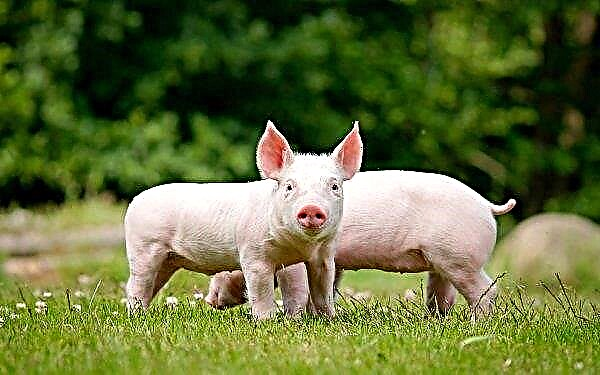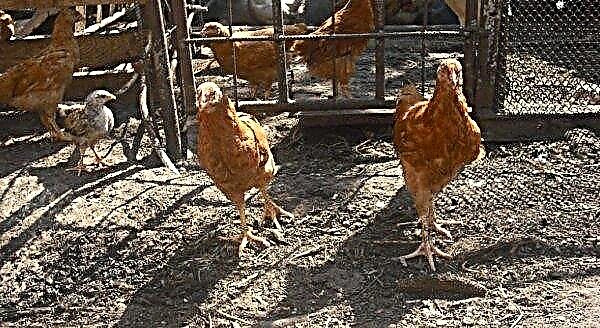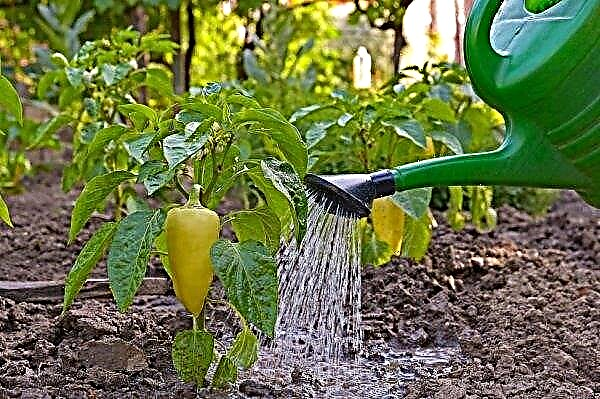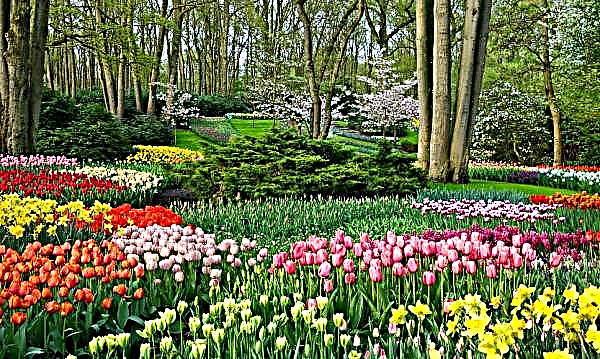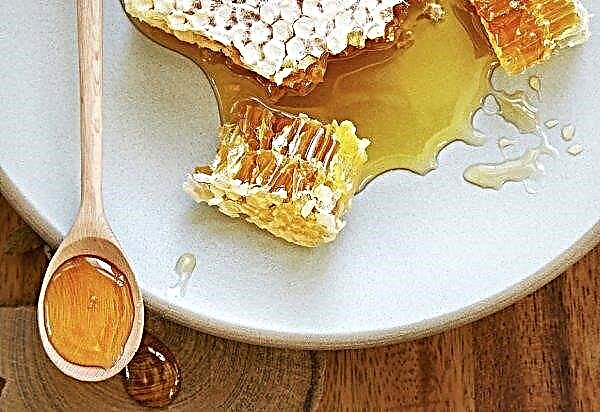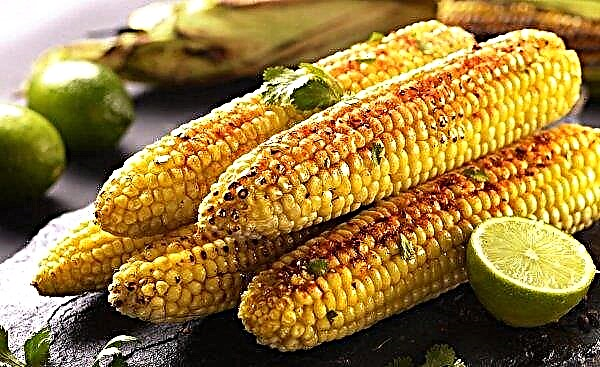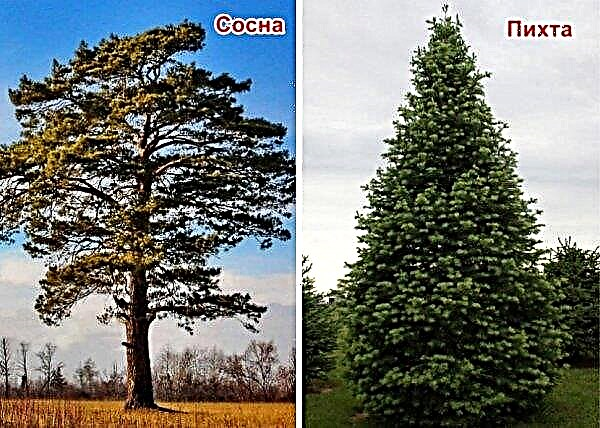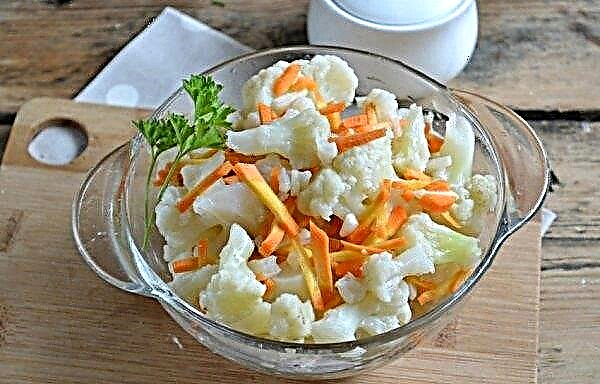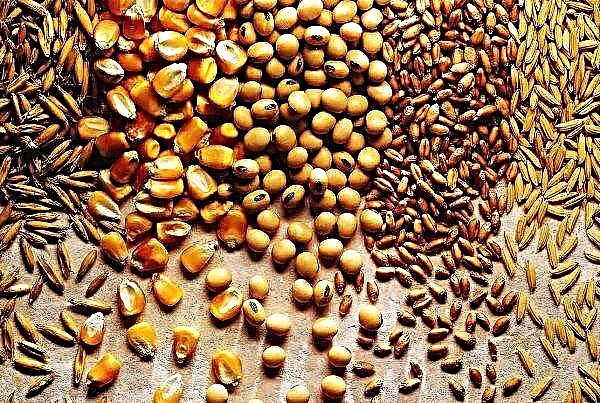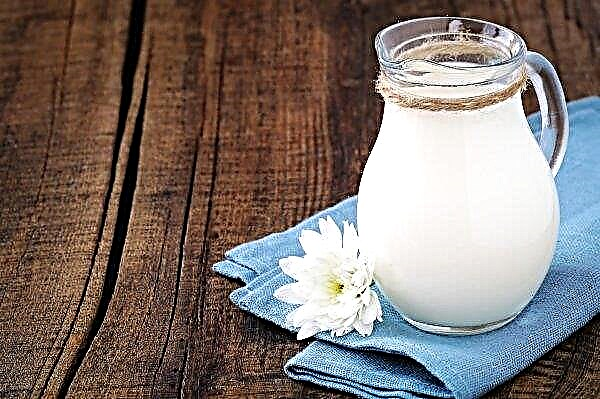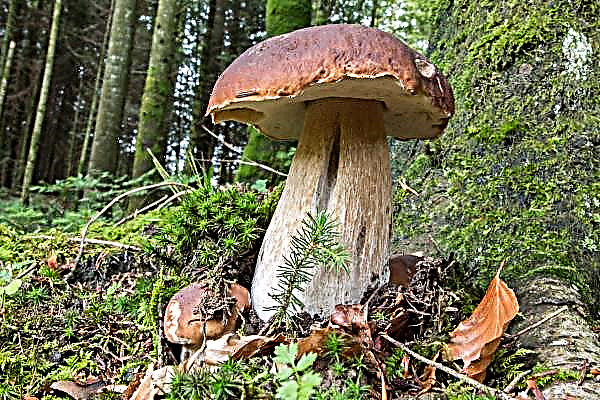Called Vinca in Latin, periwinkle is a creeping perennial unpretentious plant. The genus of the Kutrov family is widespread in Eurasia and North Africa. It has blue and violet (or a different shade) flowers that bloom in early spring, and strong leaves that do not lose their color under the snow. The article suggests familiarizing yourself with the features of growing crops in open ground.
When to plant periwinkle: autumn or spring
Planting in open ground is possible not only in the European part of Russia, but also in regions such as the Ural region. The process is simple, and the flower itself takes root on any soil and is not picky about light: it grows in the sun and in the shade. Periwinkle is very viable. It is customary to plant it after the frosts have completely ended - from May to June.
Did you know? Surprisingly, in the Middle Ages, European inquisitors used periwinkle as a catalyst for a person’s connection with evil spirits.
In the Urals
Drought and frost resistance are the distinguishing characteristics of a herbaceous plant. In the Urals and Siberia, it is not recommended to carry out seed planting. But layering or cuttings in open ground in these regions, periwinkle normally reproduces. Planting of cuttings is carried out when the soil is heated in late spring or early summer.

In the middle lane
In central Russia, flowers can be planted in spring and autumn. Planting in the winter is possible when the rest of the plants are already in a dormant period. There is also a summer option. Optimally, in this season, planting should be carried out under conditions of increased soil moisture.
In other regions
The unpretentiousness and active growth of the perennial make it able to grow in different places: in a warm southern climate and continental Siberian. Indeed, under natural conditions, the plant is found in the Mediterranean, Asia and the Caucasus.
Autumn planting tempers the periwinkle. For reliability, it can be covered, protected from frost. If in a particular region the land is scarce, compost or humus can be added to it, then the flower will develop better and become larger.

How to plant periwinkle seeds
The seed method of distribution of periwinkle is not popular, but it is used to obtain seedlings. In early spring, seeds are sown in soil, the temperature of which should not be lower than room temperature.
Preparation and seeding
Harvested seeds that are ripened or purchased at the store must be sown in February or March. Soil, consisting of peat and sand, must be indoors at an air temperature of + 23 ° C. They make indentations of about 1 cm in the ground, each seed is placed at a distance of 4 cm. Watering is carried out. Containers with seeded material need to be covered with a film that does not allow light to pass through.
Important! Pre-treatment of seeds with a weak solution of potassium permanganate will benefit. Wet them with gauze and place the material in it for a day.
Seedling Care
With a height of 8 cm and the presence of 4 leaves, sprouts dive. They are transplanted into separate pots.
The main actions for the care of seedlings:
- gradual decrease in temperature;
- regular but moderate watering;
- top dressing after 20 days in the form of a complex based on nitrogen and phosphorus.

Lighting
When the periwinkle sprouts (after about a week), it needs to gradually get used to the light. Covered with a black film, the tanks, when the shoots appear, are gradually supplied with lighting. You can’t immediately open the sprouts and put them in a sunny place.
Temperature
Lowering the temperature is slow. You need to get closer to the level of + 20 ° C or a couple of degrees lower if the seeds germinated at +23 ... + 25 ° C. Accordingly, it is dangerous to plant young plants in open ground if the earth and air are not warmed up. It is worth waiting for the May heat.
Humidity and watering
Water the vinca sprouts should be so that the soil is sufficiently moistened. You can use a neat spray. The main thing is not to over-dry and not to over-moisten the earth in order to avoid decay. Maintaining moderation in the amount of moisture is easy.
Important! If you decide to sow the seeds in open ground, then do this in late autumn so that the sowing does not have time to germinate.
When to transplant in open ground
It is recommended to plant a periwinkle in the fall of next year or in May after the end of frost, because in order to take root in a new place, the plant needs a strong root system. To stimulate it, nitrogen-phosphorus top dressing is done every 14 days before transplanting into open ground.
Choosing a place to change
A suitable landing site has the following features:
- slight elevation, which prevents stagnation of water;
- penumbra;
- soil friability;
- the presence of drainage.
 Planting near fruit trees is optimal. Natural mulch under the trees provides excellent conditions and friability.
Planting near fruit trees is optimal. Natural mulch under the trees provides excellent conditions and friability.
Outdoor periwinkle care
Care is simple, especially since a periwinkle can do without it. The most important thing is to stimulate active growth by irrigation and fertilizer, if that is what is required. In the first 2-3 years, the pace of development is low, but then the flower obviously begins to grow.

Top dressing
Compost, humus and nitrogen fertilizers will be beneficial to the plant. It responds very well to light soil, which is supported by the addition of compost. You can add mineral fertilizers during watering several times during the warm season or spray them with soil after rain.
Watering
In the presence of rains, additional irrigation is not required. In the summer heat, you can water once a week.

Young seedlings
At first, young plants can be additionally watered, but you should not do this often, because the culture does not like waterlogging. It is better to mulch the soil or plant flowers in the presence of natural mulch - under the trees.
Adult plants
Only in the dry period, water. Adult periwinkle does not need additional care.
Spraying
Spraying is carried out under conditions of low humidity. If the gardener noticed the drying of the edges of the leaves, then it is worthwhile to carry out additional sprinkling.
Important! Periwinkle can be cut after flowering. Pruning promotes saturation of the roots with substances and a better wintering.
Topping
If you pinch the tops of the shoots, the plant becomes more lush, bushy. With this action, the lateral branches grow more actively. Not only an adult bush can be pinched, but also young.
Pruning
Cropping is useful. It contributes to thickening, rejuvenation and proliferation. Cut faded shoots (seeds must also have time to ripen) and collect the resulting branches can be for further reproduction. To form a crown and form new buds, the plant should be pruned in early spring.

Why does not bloom
The most probable reason why there is no flowering is excessive dimming. If you plant a periwinkle under the trees, then as much light passes through the crown as the plant needs. But in the dark spruce forests, flowers on the plant do not appear.
Rotting of the roots due to the fact that the soil is not loose, not saturated with air, but also very filled with moisture, which stagnates, leads to death. Such conditions contribute to susceptibility to various types of diseases, which negatively affects the entire plant, especially the ability to bloom flowers.
Pests and diseases
The main pests are aphids and scale insects. The remaining parasites do not attack the periwinkle because it contains alkaloids that are toxic. If, nevertheless, the leaves began to fall off, then you should fight with scabs: remove them manually with a cotton swab dipped in soapy water.
The use of insecticides is also recommended. Biotlin, Actellik or Apploud (you must strictly follow the instructions of a certain tool) to completely destroy these insects.
 Drugs must be used repeatedly due to the fact that pests for further reproduction lay eggs on the plant.
Drugs must be used repeatedly due to the fact that pests for further reproduction lay eggs on the plant.
It is customary to use against aphids "Karbofos" or "Fufanon": 10 ml is diluted in a small amount of water and diluted in a liquid with a volume of a ten-liter bucket (1.5 l of the resulting solution is spent on processing a plot of 10 m²).
Important! There are folk methods of fighting against aphids: watering with infusions of husks of garlic or onions (they take 200 g of material per 10 liters of water, insist for five days, water 3 times at intervals of five days).
The main diseases:
- rust;
- powdery mildew.
Bubbles of a rusty hue appearing on the bottom of the leaves indicate the first of the mentioned diseases. Against it, treatment with 1% boric acid and Bordeaux fluid helps. For this purpose also use means such as "Topaz" and Kuproksat.
Against powdery mildew, which manifests itself in the form of a white coating on top of foliage, drugs are used Fitosporin, Gamair, Quadrice, Topsin.
 When choosing any fungicide, be sure to read the detailed instructions that are placed on the package.
When choosing any fungicide, be sure to read the detailed instructions that are placed on the package.
Methods of reproduction of periwinkle
In addition to seed propagation, which is not so popular for culture, there are more convenient vegetative methods: cuttings and the method with layering. It is also optimal to carry out the cultivation of periwinkle by separation of the bush.
Cuttings
When the plant is pruned, then cuttings can be harvested. Their rooting is done simply by placing in a container with water. In this case, remove the lower leaves, otherwise they will rot, and the fluid should always be replaced. After about two weeks, the periwinkle will take root. A plant with a developed underground process can be planted in the ground.

Layering
the written type is creeping. Therefore, in places where the shoots come into contact with the soil, roots may appear. This feature is great for getting layering. The rooted periwinkle node is disconnected from the main mother plant and planted in another selected location.

Splitting the bush
Shrub separation is an interesting method of propagation. You can act according to it at any time, excluding winter. The best time is before the flowers.
Did you know? If you plant a perennial on the balcony in a pot, then its stems can grow up to 2 meters or more and hang like creepers.
Instruction:
- dig up the plant;
- free the roots from a clod of earth;
- remove dead and rotten parts;
- divide the plant so that on each part there is both a kidney and the main share of the rhizome;
- plant the selected material in the same soil in which the bush grew and water.

Periwinkle in landscaping
Periwinkle is perfect for decorating rabatok, flowerbeds and borders. The combination of bright flowers and fleshy leaves is advantageous, noticeable, in good harmony with other plants.
In landscape design, dense bushes of the described culture are used as a creeping layer that covers the ground, or an element growing on the slopes and in the form of a hedge. Against the background of saturated and strong greenery, similar to a green carpet and remaining so in the winter, various flowers look great.

What colors is combined with
Forget-me-nots, snowdrops, primrose coexist next to a perennial. Ferns coexist well. You can also decorate tree trunks with this culture, especially since it grows well next to large fruit plants.
Is it possible to plant an iris around
Periwinkles are normally combined with irises. High peduncles rise above the bush of a creeping plant, which itself mulches the soil. For a multi-level design of the landscape of the garden, you can make planting irises with lower colors, between which perennial creeps. Both species can bloom at the same time. It is important to ensure that the creeping look does not grow much.
How to keep periwinkle in winter
Especially large and pink species need special shelter. The rest tolerate cold and frost. Young plants can be protected so that shoots do not freeze. In order to support perennial in the winter, the first year bushes are covered with straw, spruce branches or leaves.
It is important not to remove the shelters too early, because spring weather is very changeable. It is recommended before the onset of winter to mulch young seedlings with fine organic.
Did you know? If the lovers tear the leaf in half and eat each of their shares, their connection will not stop - the halves of the leaf connect the hearts.
How to get periwinkle
An abundantly growing culture may interfere with other plants over time.
To get it out of the garden, you can do this:
- with slight overgrowing - just pull out bushes with roots;
- with powerful distribution - remove the soil layer in which the root system of the periwinkle is located (then add fresh soil).
 An excellent integumentary plant with beautiful flowers and densely green leaves will decorate any part of the garden space. Culture does not like only clayey clay that is too heavy; otherwise it is undemanding to maintain and unpretentious to conditions.
An excellent integumentary plant with beautiful flowers and densely green leaves will decorate any part of the garden space. Culture does not like only clayey clay that is too heavy; otherwise it is undemanding to maintain and unpretentious to conditions.
You can maintain compactness by pruning and transplanting, or, conversely, increase the distribution of periwinkle, because it is growing very actively. It is more convenient to propagate by layering and cuttings. Different species have unique varieties, each of which has special properties, for example, variegation or shades of flowers.

